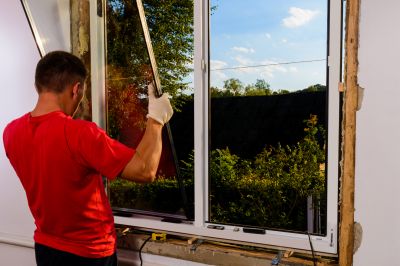Optimal Timing for Window Installations
Windows installations are best scheduled during periods of low activity to ensure minimal disruption. Typically, the optimal times are during off-peak hours or seasons when system downtime has less impact on operations. Planning ahead can help avoid busy periods and ensure a smooth installation process.
Scheduling installations during late fall or early winter can reduce operational interruptions, as many businesses experience slower activity during these times.
Early mornings on weekdays often provide a window of time before daily operations commence, allowing for installations with minimal disruption.
Weekends are ideal for installations that require longer downtime, as they typically do not interfere with regular business hours.
Planning installations before fiscal quarters can prevent delays during peak business periods, ensuring systems are updated beforehand.

Technicians performing Windows installations during off-hours.

Setting up new Windows systems in a server environment.

Upgrading office computers with new Windows OS.

IT professional configuring Windows systems.

Preparing network connections for Windows deployment.

Testing Windows installations for stability.

Staff learning to use new Windows features.

Backing up data before Windows installation.

Verifying system functionality after installation.
| Timing Consideration | Reason |
|---|---|
| Off-peak hours | Minimize impact on daily operations. |
| Weekends | Allow longer installation windows without disrupting work. |
| Pre-holiday periods | Reduce operational downtime during busy seasons. |
| Before major updates | Ensure system stability before critical projects. |
| During scheduled maintenance | Align with existing maintenance windows. |
| Early mornings | Start work before staff arrive. |
| Late evenings | Complete installations after hours. |
| Pre-Quarter | Prepare systems ahead of fiscal periods. |
Windows installations are a critical component of maintaining secure and efficient computing environments. Proper timing can reduce downtime and ensure compatibility with existing systems. Statistics indicate that scheduling during low-activity periods can decrease installation-related disruptions by up to 50%. Additionally, thorough planning and preparation contribute to smoother updates, minimizing the risk of technical issues and data loss.

IT professionals performing Windows setup.

Configuring Windows settings for optimal performance.

Upgrading individual workstations with Windows.

Connecting Windows systems to the network.
Interested in scheduling a Windows installation? Filling out the contact form can provide detailed information tailored to specific needs. Proper timing and execution ensure systems are updated efficiently, supporting operational continuity and security.


